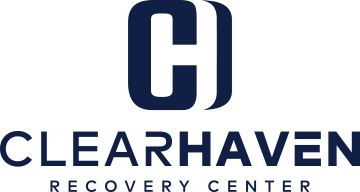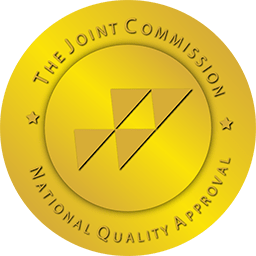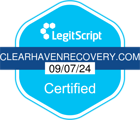Medication-assisted treatment (MAT) is a proven and effective option for individuals struggling with addiction. The process involves the use of medication, in combination with counseling and behavioral therapies, to help someone overcome their addiction and safely withdraw from the substance they are addicted to. MAT has become increasingly popular in recent years due to its numerous benefits in terms of safety, effectiveness, and accessibility. In this article, we’ll explore the advantages of using medication-assisted treatment for safe and effective withdrawal, and why it may be the best option for anyone looking to overcome their addiction and move towards a healthier, happier life. Whether you’re someone struggling with addiction yourself, or a healthcare professional looking to better understand the benefits of MAT, read on to learn more about this powerful treatment option.
What is medication-assisted treatment?
Medication-assisted treatment (MAT) is a form of addiction treatment that uses medication to help individuals safely withdraw from the substance(s) they are addicted to. MAT is typically used in combination with counseling and behavioral therapies to provide a comprehensive approach to addiction treatment. The medications used in MAT work by reducing cravings and withdrawal symptoms, making it easier for individuals to overcome their addiction and stay sober.
MAT has been shown to be effective in treating a variety of addictions, including opioid addiction, alcohol addiction, and nicotine addiction. However, it is important to note that MAT is not a cure for addiction. It is a tool that can be used to help individuals manage their addiction and achieve long-term recovery.
The opioid epidemic and the need for safe withdrawal methods
The opioid epidemic has been a major public health crisis in the United States in recent years. Opioid addiction has become increasingly common, and overdose deaths involving opioids continue to rise. One of the challenges of treating opioid addiction is the risk of withdrawal symptoms. Withdrawal from opioids can be extremely uncomfortable and even dangerous, and many individuals who try to quit on their own are unable to do so due to the severity of their symptoms.
This is where medication-assisted treatment comes in. MAT provides a safe and effective way for individuals to withdraw from opioids and manage their addiction. The medications used in MAT can help to reduce withdrawal symptoms, making it easier for individuals to overcome their addiction and stay sober.
Benefits of medication-assisted treatment
There are numerous benefits to using medication-assisted treatment for addiction recovery. Some of the key benefits include:
- Increased safety: MAT provides a safe way for individuals to withdraw from substances and manage their addiction.
- Reduced cravings: The medications used in MAT can help to reduce cravings for substances, making it easier for individuals to stay sober.
- Improved treatment retention: Individuals who receive MAT are more likely to stay in treatment and complete their addiction recovery program.
- Improved quality of life: MAT can help to improve an individual’s overall quality of life by reducing the negative effects of addiction and promoting sobriety.
Types of medications used in medication-assisted treatment
There are a variety of medications that can be used in medication-assisted treatment, depending on the type of addiction being treated. Some of the most common medications used in MAT include:
- Methadone: Methadone is a synthetic opioid that is used to treat opioid addiction. Methadone works by reducing cravings and withdrawal symptoms, while also blocking the effects of other opioids.
- Buprenorphine: Buprenorphine is a partial opioid agonist that is used to treat opioid addiction. Buprenorphine works by reducing cravings and withdrawal symptoms, while also blocking the effects of other opioids.
- Naltrexone: Naltrexone is used to treat opioid and alcohol addiction. Naltrexone works by blocking the effects of opioids and alcohol, reducing cravings, and preventing relapse.
- Acamprosate: Acamprosate is used to treat alcohol addiction. Acamprosate works by reducing cravings and withdrawal symptoms, while also restoring the balance of chemicals in the brain that are affected by alcohol use.
How medication-assisted treatment works
Medication-assisted treatment works by combining medication with counseling and behavioral therapies to provide a comprehensive approach to addiction treatment. The medications used in MAT help to reduce cravings and withdrawal symptoms, while also blocking the effects of other substances. This makes it easier for individuals to manage their addiction and stay sober.
In addition to medication, MAT also involves counseling and behavioral therapies. These therapies can help individuals to identify the underlying causes of their addiction, develop coping skills, and make positive changes in their lives. By combining medication with counseling and behavioral therapies, MAT provides a holistic approach to addiction treatment that can improve an individual’s chances of achieving long-term recovery.
Risks and side effects of medication-assisted treatment
Like any form of medical treatment, medication-assisted treatment does come with some risks and side effects. The specific risks and side effects will depend on the type of medication being used. Some of the most common risks and side effects of MAT include:
- Nausea and vomiting
- Constipation
- Dizziness
- Sedation
- Respiratory depression
- Overdose
It is important to work closely with a healthcare provider when undergoing medication-assisted treatment. Your healthcare provider can monitor your progress, adjust your medication dosage as needed, and help you manage any side effects or complications that may arise.
The importance of counseling and therapy in medication-assisted treatment
While medication is an important part of medication-assisted treatment, it is not enough on its own. Counseling and therapy are also critical components of MAT. These therapies can help individuals to address the underlying causes of their addiction, develop coping skills, and make positive changes in their lives.
Some of the most common types of counseling and therapy used in MAT include:
- Cognitive-behavioral therapy (CBT): CBT is a type of therapy that helps individuals to identify and change negative thought patterns and behaviors.
- Motivational interviewing (MI): MI is a type of therapy that helps individuals to explore their motivations for change and develop a plan for achieving their goals.
- Family therapy: Family therapy can help to improve communication and relationships among family members, which can be especially important for individuals who are recovering from addiction.
By combining medication with counseling and therapy, MAT provides a comprehensive approach to addiction treatment that can help individuals to achieve long-term recovery.
Success rates of medication-assisted treatment
Medication-assisted treatment has been shown to be an effective option for addiction recovery. According to the National Institute on Drug Abuse (NIDA), MAT has been shown to:
- Improve treatment retention: Individuals who receive MAT are more likely to stay in treatment and complete their addiction recovery program.
- Reduce opioid use: MAT has been shown to reduce opioid use and improve overall health outcomes for individuals with opioid addiction.
- Reduce overdose deaths: MAT has been shown to reduce the risk of overdose death among individuals with opioid addiction.
Access to medication-assisted treatment
Despite the numerous benefits of medication-assisted treatment, access to MAT can be a challenge for many individuals. Some of the barriers to access include:
- Lack of healthcare coverage: Many insurance plans do not cover the cost of MAT, making it difficult for individuals to afford treatment.
- Lack of healthcare providers: There is a shortage of healthcare providers who are trained and authorized to prescribe medication for addiction treatment.
- Stigma: There is still a great deal of stigma surrounding addiction and addiction treatment, which can make it difficult for individuals to seek help.
However, there are resources available to help individuals access MAT. The Substance Abuse and Mental Health Services Administration (SAMHSA) provides a directory of MAT providers, which can help individuals to find a provider in their area who can help them get the treatment they need.
Conclusion
Medication-assisted treatment is a powerful tool for addiction recovery. By combining medication with counseling and therapy, MAT provides a comprehensive approach to addiction treatment that can help individuals to manage their addiction and achieve long-term recovery. While there are some risks and side effects associated with MAT, the benefits of this treatment option are numerous. If you or someone you know is struggling with addiction, consider exploring medication-assisted treatment as a safe and effective option for withdrawal and recovery.
Contact us at 833.970.2054 to speak with one of our knowledgeable addiction specialists. We will give you the information you need to find a detox program near you that meets your needs.











